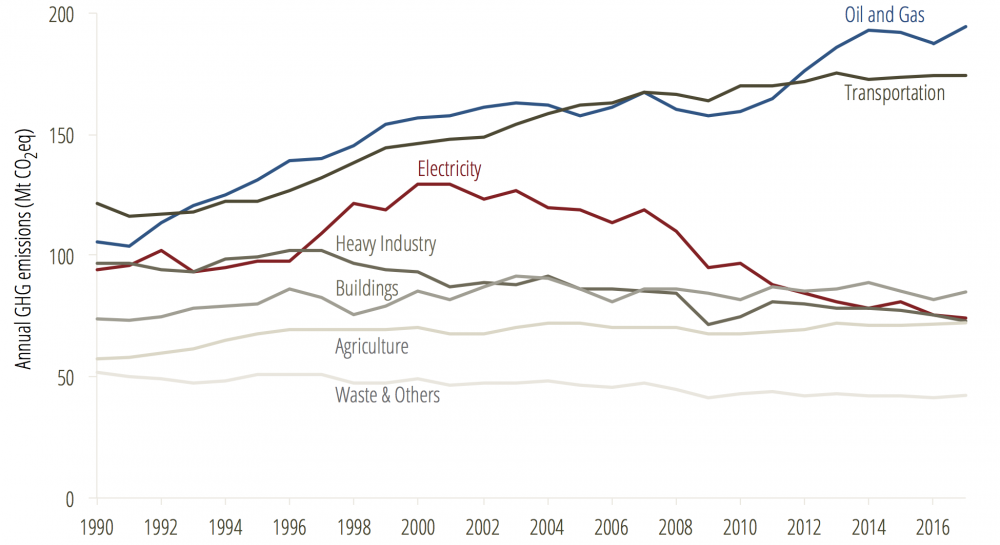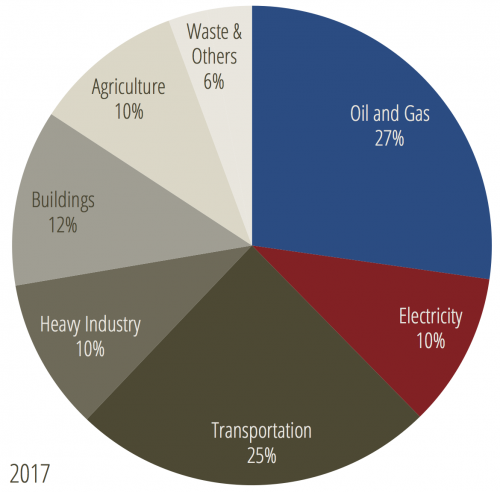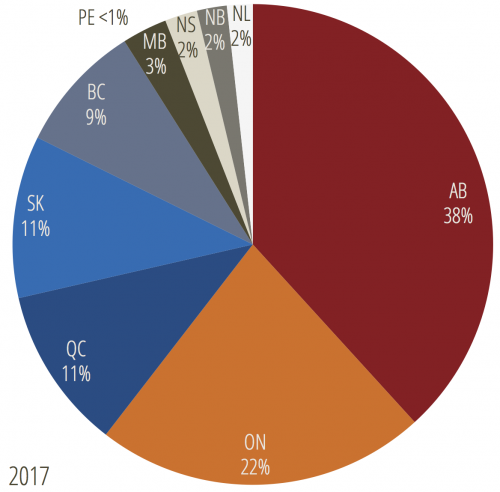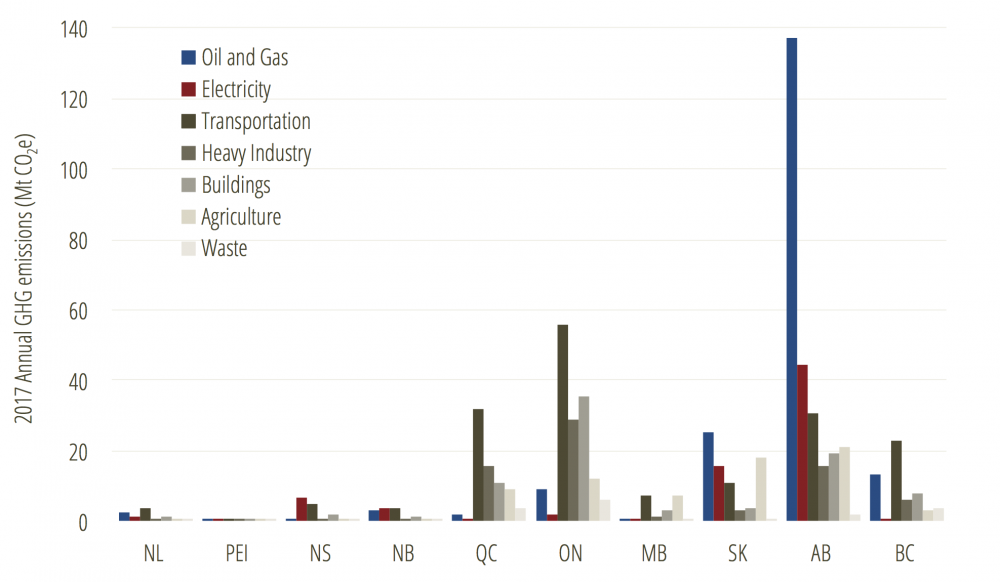The most important climate numbers you need to know
Before weighing in on policy, do you know your basic Canadian climate math?
BLOG - June 25, 2019 - By Bora Plumptre (Pembina Institute)

Both the oil and gas and transportation sectors have shown marked emissions increases since 1990. Photo: Pembina Institute
Five minutes. That’s all it takes to get a grip on the numbers you need to know to assess political parties’ plans to lower greenhouse gas emissions here in Canada. Are we moving in the right direction? The numbers don’t lie - and the data may surprise you.
The National Inventory Report is an annual accounting of a country’s national inventory of greenhouse gases (GHGs), tallied to meet reporting requirements for the United Nations Framework Convention on Climate Change (UNFCCC). At first glance, the latest numbers (data is available to the end of 2017) seem to paint a picture of a country moving, albeit at a snail’s pace, in the right direction, with a decrease of almost 15 megatonnes of GHGs from 2005 (Canada’s chosen base year under its UNFCCC reporting obligations). Take a closer look, though, and you’ll see that from 2016 to 2017, more than half of those gains were lost as Canada’s emissions actually jumped by eight MT. Pay close attention to two provinces and three sectors in particular.
Here’s what the data reveals:
By sector
The latest data show that while greenhouse gas emissions from some sectors are either flatlining or even decreasing, both the oil and gas and transportation sectors have shown marked emissions increases since 1990. Heavy industry has managed to decrease carbon emissions. The building sector, on the other hand, has achieved little overall progress over the past decade, and it now outweighs heavy industry as the third-highest emitting sector in Canada. Overall, as of 2017, the oil and gas sector is the biggest contributor of GHG emissions in Canada, with the transportation sector coming in a close second.
By province
Along with a sectoral breakdown, the NIR also examines emissions by province, which is useful in a federation where climate change - a global problem - is tackled by all levels of government. We need all hands on deck to solve this challenge.
The latest data show us that two provinces are responsible for 60 per cent of Canada’s GHG emissions.
And within that, we can also see how much each sector is driving emissions in each province:
The takeaways
Overall, the National Inventory Report gives a clear picture of where we need to focus our most intensive climate efforts. The sectors most in need of urgent attention include oil and gas, transportation and buildings.
The numbers are indisputable.
Here's another number: Nine. Canada is the ninth biggest contributor to greenhouse gas emissions in the world. That's not an insignificant number. We now know where to look to reduce Canada's contribution to this global problem, to restore balance to planetary climatic systems, to slow the frequency and intensity of costly extreme weather events like droughts, flooding and wildfires here at home, and, through investment in clean technology and renewable energy, to position Canadian workers to profit from the global shift toward a clean economy.
As you’re evaluating the numbers, keep in mind that climate policies take time to take effect. These numbers clearly demonstrate that Canada needs to do more, not less - we have to rapidly drive down GHG emissions here and now, while investing in technology that will help us make deep reductions in the long term as well. Time is running out. As Canada's political parties release their climate plans, take a look at the numbers and where they're focusing their efforts - and decide for yourself if their math adds up.
 (And if you're really keen, try your hand at building a cost-effective climate policy package that lowers greenhouse gas emissions with our Energy Policy Simulator. Well-designed energy policies reduce pollution, cut consumer costs, and minimize dependence on foreign energy supplies; done wrong, they can lock in carbon-intensive technologies or waste money. See for yourself which policies will best solve climate change.)
(And if you're really keen, try your hand at building a cost-effective climate policy package that lowers greenhouse gas emissions with our Energy Policy Simulator. Well-designed energy policies reduce pollution, cut consumer costs, and minimize dependence on foreign energy supplies; done wrong, they can lock in carbon-intensive technologies or waste money. See for yourself which policies will best solve climate change.)





